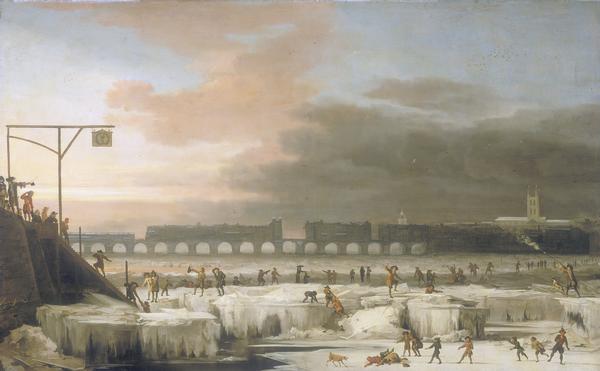It has been known now that, roughly coincident with much of the Western and Central European Bronze Age, a strong cold spell similar to the Little Ice Age, which marked much of Modern Age.
I. Schimmelpfennig et al., Holocene glacier culminations in the Western Alps and their hemispheric relevance. Geology 2012. Pay per view ··> LINK [doi:10.1130/G33169.1]
AbstractThe natural variability of Holocene climate defines the baseline to assess ongoing climate change. Greenland ice-core records indicate warming superimposed by abrupt climate oscillations in the early Holocene, followed by a general cooling trend throughout the middle and late Holocene that culminated during the Little Ice Age (LIA). Tropical precipitation changes correlate with these patterns throughout the Holocene. Here we use mountain glaciers in the European Alps to reconstruct the regional Holocene climate evolution and to test for a link between mid-latitude, North Atlantic, and tropical climate. Our precise 10Be chronology from Tsidjiore Nouve Glacier, western Swiss Alps, indicates a glacier culmination during the earliest Holocene ∼11.4 k.y. ago, likely related to the Preboreal Oscillation. Based on our data, no Holocene glacier advance of similar amplitude occurred until ∼3.8 k.y. ago, when the glacier reached LIA limits. The 10Be ages between 500 and 170 yr correspond to the LIA, while the youngest 10Be ages overlap with the historically recorded post-LIA glacier positions. Integrating our data with existing records, we propose a hemispheric climate link between the Alps, North Atlantic temperature, and tropical precipitation patterns for the Holocene, supporting the concept of a pervasive climate driver. These findings from northern mid-latitudes are consistent with the hypothesis formulated for the tropics that the Earth's thermal equator, responding to North Atlantic temperature changes, might have migrated southward throughout the Holocene, reaching the southern turning point toward the end of the LIA.
 |
| The river Thames froze often in the 17th and 18th centuries (A. Hondius) |
The dates mentioned, between c. 1800 and 1200 BCE are coincident with the bulk of the Bronze Age in Europe (except for the Balcans and West Asia, where is the late phase of the Bronze Age). Ironically it was a rather prosperous and interactive period that ended up in many civilizational collapses from Iberia to Anatolia soon after the temperatures went up again (beginnings of the Iron Age).
By this I am not implying that the temperature cycle and the prehistory/proto-history cycle are related in any obvious way but can't help notice that "our" Little Ice Age was also a period of expansion and prosperity (at least for some) and that we may now be heading to civilizational collapse as well as temperatures raise. Just a coincidence maybe...
More details at PysOrg (h/t Pileta[es]).
According to other reconstructions, peak warmth occurred ~1600 BCE (the minoan warm period), with sudden cooling occurring after 1300 BCE. So the prosperity of the bronze age happened during the warm phase, and the collapse happened soon after the cooling.
ReplyDeleteI'm not sure how good is this study compared to your reference (links?) but something in favor of this one is that it was done in the Alps and not, say, Antarctica, surely indicating better the local conditions.
ReplyDeleteHowever if you'd ask me, I could only imagine that the Thera volcano would have caused a mini-Ice-Age itself and that one is now solidly dated to the 17th century BCE, almost exactly to 1628 BCE, closer to the dates of this paper than yours - but not quite either.